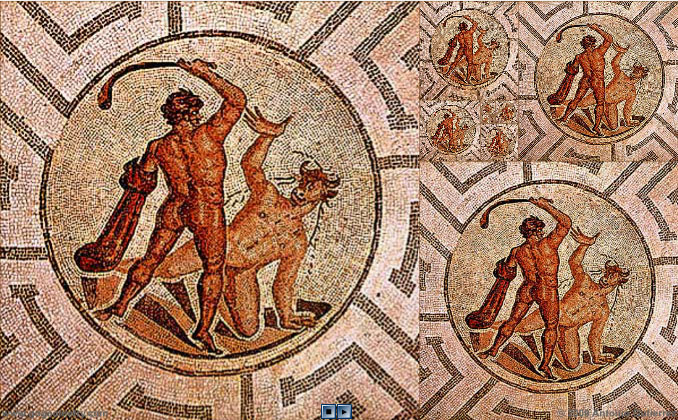Sacred Geometry: heseus and the Minotaur Labyrinth, Golden Rectangle
Successive Golden Rectangles dividing a Golden
Rectangle into squares (Theseus and the Minotaur Labyrinth)

Labyrinth
In Greek mythology, the Labyrinth was an elaborate structure designed and built by the legendary artificer Daedalus for King Minos of Crete at Knossos. Its function was to hold the Minotaur, a creature that was half man and half bull and was eventually killed by the Athenian hero Theseus. Daedalus had made the Labyrinth so cunningly that he himself could barely escape it after he built it.
Prehistoric labyrinths are believed to have served as traps for malevolent spirits or as defined paths for ritual dances. In medieval times, the labyrinth symbolized a hard path to God with a clearly defined center (God) and one entrance (birth).
Labyrinths can be thought of as symbolic forms of pilgrimage; people can walk the path, ascending toward salvation or enlightenment. Many people could not afford to travel to holy sites and lands, so labyrinths and prayer substituted for such travel. Later, the religious significance of labyrinths faded, and they served primarily for entertainment, though recently their spiritual aspect has seen a resurgence.
In antiquity, the less complicated labyrinth pattern familiar from medieval examples was already developed. In Roman floor mosaics, the simple classical labyrinth is framed in the meander border pattern, squared off as the medium requires, but still recognisable. Often an image of a bull-man, a minotaur, appears in the centre of these mosaic labyrinths. Roman meander patterns gradually developed in complexity towards the fourfold shape that is now familiarly known as the medieval form.
Source:
Wikipedia,
Labyrinth.
A golden rectangle
is a rectangle whose side lengths are in the golden ratio,
one-to-phi, that is, approximately 1:1.618. A distinctive
feature of this shape is that when a square section is
removed, the remainder is another golden rectangle, that is,
with the same proportions as the first. Square removal can
be repeated infinitely, which leads to an approximation of
the golden or Fibonacci spiral.
.
|

